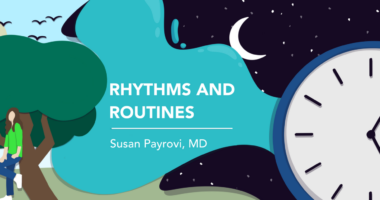Embracing the helper’s high: How I learned to thrive with MS
I can still help others, I just need to avoid a lot of stress

I was driving home the other day when something in my rearview mirror caught my attention: A giant pickup truck had flipped over in the fast lane of the highway. It did not look good. I pulled over on the left shoulder and ran to help, completely forgetting the back injury I’d been nursing for nine months.
The next few minutes lasted an eon as I worked with a few others to kick in the window to drag the semiconscious driver out of the back seat of the now mangled truck.
Although I haven’t set foot in an operating room in 15 years (thanks to multiple sclerosis (MS) ending my career as an anesthesiologist), it all came back to me instinctually: Check airway, breathing, and circulation; hold C-spine and get a quick history before he goes fully unconscious. I even improvised and put my ear on his back to check for breath sounds, which were completely out on one side.
Most people run away from a scenario like this, but not me. I thrive on adrenaline — not the kind you get on a roller coaster, but the one where you step in and help others in a critical, vulnerable situation.
There’s a name for this: the helper’s high. When we perform acts of service for others, a rush of adrenaline, endorphins, and other feel-good hormones can make us feel a bit superhuman. It can be a little addicting, and it’s no accident that I chose anesthesia as my specialty out of medical school.
The flip side to the helper’s high is that the flow of those same hormones, including cortisol, mobilizes the body to fight or take flight. Heart rate, blood pressure, and breathing rate all increase. The gut stops moving, blood sugar rises, and the immune system sends out its cells and chemical messengers to deal with the danger signal received by the body.
No doubt my adrenaline-seeking behavior as an anesthesiologist contributed to the onset of my MS symptoms 15 years ago. Not only did I live with sky-high stress levels for decades, but I also wasn’t sleeping, eating right, or prioritizing self-care. I lived to work because it felt so good to be the caretaker of others when they were in their most vulnerable state.
These days, I’m taking a different approach. I know firsthand what stress is capable of doing to my body, and I’m not willing to continue that pattern. While I still love to help others, I have chosen to do it in the adrenaline-free environment of integrative and functional medicine. I still get to serve others in a deeply meaningful way without pumping up the hormones too high. And once in a while, when the right scenario presents itself, it’s totally OK to play anesthesiologist for a moment.
Note: Multiple Sclerosis News Today is strictly a news and information website about the disease. It does not provide medical advice, diagnosis, or treatment. This content is not intended to be a substitute for professional medical advice, diagnosis, or treatment. Always seek the advice of your physician or other qualified health provider with any questions you may have regarding a medical condition. Never disregard professional medical advice or delay in seeking it because of something you have read on this website. The opinions expressed in this column are not those of Multiple Sclerosis News Today or its parent company, Bionews, and are intended to spark discussion about issues pertaining to multiple sclerosis.








Lise Couturier
Thank you Dr Payrovi for sharing your story and the MD help high.
Being a trained GP MS at graduation, could only practice for 4yrs. The help high is following me in my personal life and I certified as Brain Gym movement facilitator. So I’m coming back to the Help High. I won’t chastise myself for having this feeling!
Thank you and stay healthy
Lise Couturier
Montreal Canada
MADELINE l NEWTON
so glad you were abel to help the person in this roll over ..i do know what you are talking about ,it does feel good to help others...congrats...love and happiness is for most for you ...take care ..
Amy Woolf
I totally relate to you. I did my anesthesiology residency at Stanford. I loved that adrenaline rush. Now I have SPMS, and there are no adrenaline rushes left for me
Margaret Lou Miller, M.D.
Hi Susan,
So glad that you have found a venue to remain in medical practice. I had spoken to you or had heard that you were diagnosed with Multiple Sclerosis many years ago. At that time, I was still on the faculty at USC. I left and moved to New Mexico in 2016. Practicing anesthesia is truly stressful. I enjoyed the adrenaline rush of doing complex cases. I just retired last month. I am now simply enjoying life doing other things. Best wishes, Margaret Miller, M.D, Retired Associate Professor, University of Southern California.